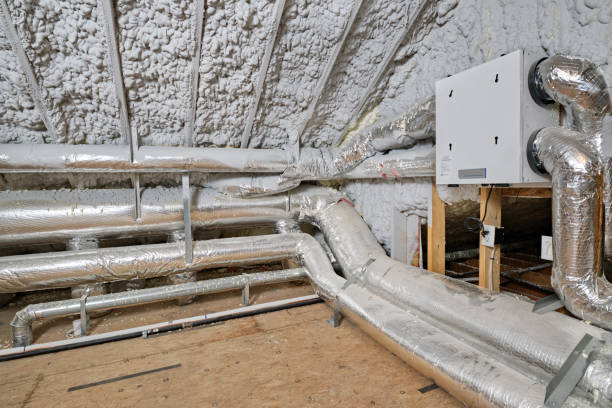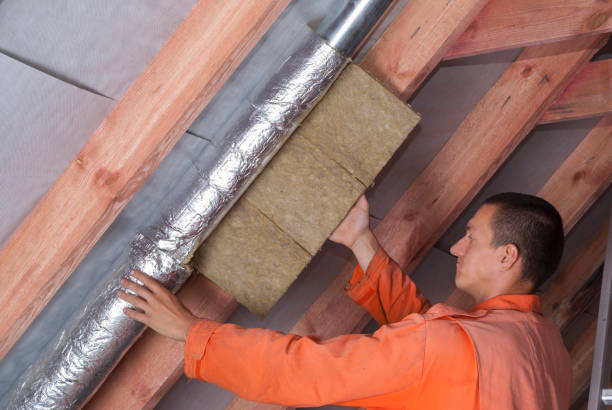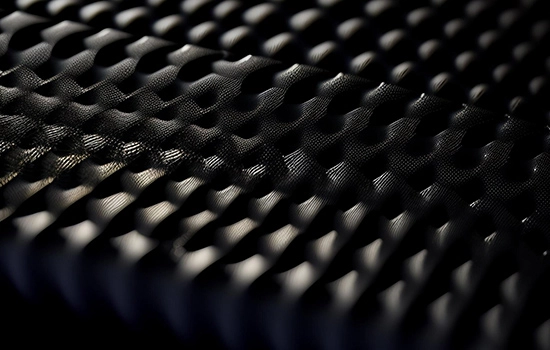Preface
Insulating pipes in the attic is an essential step in protecting your home from a range of potential issues, including energy loss, freezing, and costly repairs. Attics are often one of the coldest and most temperature-variable areas of a home. Without proper insulation, pipes in these spaces are exposed to fluctuating temperatures that can lead to them freezing in the winter months. Frozen pipes are prone to bursting, causing significant water damage, mold growth, and structural issues. Additionally, pipes that are not insulated are more likely to experience condensation, which can lead to rusting, corrosion, and leaks.
Beyond preventing physical damage, insulating your pipes also helps in reducing your overall energy costs. Uninsulated pipes can cause hot water to lose heat rapidly as it travels through them, making your water heater work harder to maintain the desired temperature. By insulating the pipes, you maintain the temperature of the water and reduce the energy required to heat it. This ultimately translates to lower utility bills, saving you money in the long run. In colder climates, proper insulation of attic pipes can also protect against cold air infiltration, ensuring that your home remains warm and energy-efficient.
Types of Pipe Insulation Materials
When insulating pipes in your attic, it's crucial to select the right material for the job. Several different types of
pipe insulation materials are available, each offering unique benefits and considerations. The most common materials include foam pipe insulation, fiberglass insulation, and reflective foil insulation. Choosing the right material depends on factors like climate, ease of installation, and budget.
Foam Pipe Insulation
Foam pipe insulation is one of the most popular choices due to its ease of installation and effective thermal resistance. Made from materials like polyethylene or rubber, foam insulation provides a protective barrier around pipes, preventing heat loss in winter and protecting pipes from the heat in summer. Foam insulation is available in pre-slit tubes, making it easy to slide over pipes without the need for additional adhesives or fasteners. The material is also resistant to moisture, which helps prevent mold growth and condensation. However, while foam pipe insulation offers excellent thermal protection, it may not be as durable or fire-resistant as other options, such as fiberglass.
Fiberglass Insulation
Fiberglass pipe insulation is another highly effective option, particularly for areas with extreme temperature fluctuations. It consists of a blanket or wrap made from woven glass fibers and is often coated with a vapor barrier to prevent moisture buildup. Fiberglass insulation is especially useful in attics and other areas where temperature extremes are common, as it provides superior thermal resistance. It’s also fire-resistant, making it a safer option in certain environments. However, fiberglass insulation can be more challenging to install than foam, requiring careful handling to avoid skin irritation from the tiny glass fibers. It also tends to be more expensive compared to foam options.
Reflective Foil Insulation
Reflective foil insulation is a great choice for homes in areas with hot climates. It works by reflecting heat away from the pipes, keeping them cool during the summer months. This type of insulation consists of a layer of reflective material, often aluminum, that is backed by a foam core. The reflective surface helps redirect radiant heat, making it ideal for areas where high temperatures are a concern. This material is lightweight, easy to install, and resistant to moisture, making it a good choice for attic pipe insulation. However, it’s less effective in colder climates since it doesn’t provide the same level of thermal resistance as foam or fiberglass.
How to Prepare Your Attic for Pipe Insulation
Before you begin insulating the pipes in your attic, it’s important to properly prepare the space to ensure the insulation is effective and applied safely. Proper preparation will help ensure that the insulation fits well around pipes and is free of obstructions that could compromise its performance. First, inspect the attic for any damage, leaks, or signs of moisture. If there is any evidence of water intrusion or leaks, these should be addressed before proceeding with insulation. Insulating over existing leaks will only trap moisture, creating a breeding ground for mold and mildew.
Next, clear the attic of any clutter or debris that could get in the way of your work. You'll need space to move around and ensure you can access all the pipes that need insulation. Take time to clean the area, as dust and dirt can affect the adhesive properties of some insulation materials. If your attic has poor ventilation, consider installing vents or fans to ensure the space remains well-ventilated during the insulation process. This will help prevent excess heat or humidity buildup, which could affect the performance of your insulation.
Step-by-Step to Insulate Pipes in the Attic
Insulating the pipes in your attic is a manageable DIY project if you follow the right steps. With the right tools and materials, you can complete this project in just a few hours. The following step-by-step guide will help you through the process, ensuring that your attic pipes are properly insulated.
Measure and Cut Insulation
The first step in insulating pipes is to measure the length of pipe you need to cover. Using a tape measure, determine the length of each section of pipe that needs insulation. Cut the insulation material to the appropriate length using scissors or a utility knife, depending on the type of insulation you’re using. If you are using foam pipe insulation, make sure the slit along the length of the material is aligned with the pipe when you place it on. For fiberglass and reflective foil insulation, ensure that the material covers the entire pipe with enough overlap to create a secure fit.
Applying the Insulation
Once you have the
insulation cut to the correct size, it’s time to apply it to the pipes. For foam insulation, simply slide the pre-slit tube over the pipe, ensuring it fits snugly around the entire length. You may need to use adhesive or tape to secure the ends in place. For fiberglass and reflective foil insulation, wrap the material around the pipe and secure it with tape or metal fasteners. Be sure to leave no gaps, as any exposed areas will reduce the effectiveness of the insulation. Pay particular attention to areas where pipes bend or connect to ensure that the insulation is tightly sealed.
Securing the Insulation
After applying the insulation, it’s crucial to secure it properly to prevent it from shifting or falling off over time. Use pipe insulation tape to secure the ends of the insulation, and if necessary, wrap additional tape around the seams to keep everything in place. Be sure to check that the insulation is firmly attached and has no gaps. The more tightly the insulation is applied, the better it will perform. If you are using fiberglass insulation, consider wearing protective gloves and a mask to avoid irritation from the fibers.
Common Mistakes to Avoid While Insulating Attic Pipes
When insulating pipes in the attic, it's easy to make mistakes that can reduce the effectiveness of the insulation or even cause damage. Here are some common mistakes to avoid during the insulation process.
One of the most common errors is not fully sealing the insulation around the pipe. Even small gaps can allow heat to escape or cold air to infiltrate, which defeats the purpose of insulation. Ensure that the insulation is tightly secured around all pipes, especially at joints and bends. Additionally, some people forget to insulate the areas around valves and fittings. While these areas may be difficult to insulate, they should still be covered as much as possible to ensure even temperature protection across the entire system.
Another mistake is using the wrong type of insulation for the specific conditions of your attic. If your attic experiences extreme cold, a more robust material like fiberglass or foam is necessary. Reflective foil may not be sufficient for extreme temperatures, especially in cold climates. It’s also important to avoid over-insulating, as excessive insulation can lead to condensation buildup, which could cause damage to pipes. Be sure to follow manufacturer instructions when applying insulation and consider the climate in your area.
How to Maintain Insulated Pipes in Your Attic
Maintaining insulated pipes in your attic is important to ensure that the insulation continues to function effectively throughout the year. Over time, insulation may degrade or shift, which can reduce its effectiveness. Regular maintenance is necessary to ensure the longevity and efficiency of the insulation.
First, periodically check the attic to ensure that the insulation is intact and free from damage. Look for areas where the insulation has become dislodged or compressed. If you notice any gaps, reseal or replace the insulation as necessary. Insulation materials such as foam and fiberglass can degrade over time, particularly if exposed to moisture or extreme temperatures. Make sure that there is no mold growth around the pipes, as this could indicate moisture problems that need addressing.
Also, inspect the pipes themselves for any signs of damage, corrosion, or leaks. If you notice any issues with the pipes, repair them promptly to prevent further damage. In particularly cold climates, check the pipes periodically during the winter to ensure that they remain well-insulated and have not been affected by freezing temperatures. If you notice a significant temperature drop, additional insulation or heating may be necessary.
Conclusion
Insulating pipes in the attic is a simple yet effective way to protect your home from water damage, energy loss, and high utility bills. By selecting the appropriate insulation material, properly preparing your attic, and following the correct steps for installation, you can significantly improve your home’s efficiency and prevent costly repairs. While the process requires some effort and attention to detail, the long-term benefits of insulating your attic pipes make it a worthwhile investment.
FAQs
What is the best type of insulation for attic pipes?
Answer: Discuss foam and fiberglass insulation.
How do I know if my attic pipes need insulation?
Answer: Look for cold spots, frozen pipes, or high energy bills.
Can I insulate my attic pipes myself?
Answer: Yes, with the right materials and tools, you can insulate your attic pipes.
How long does pipe insulation last?
Answer: Typically, it lasts 10-20 years depending on the material used.












